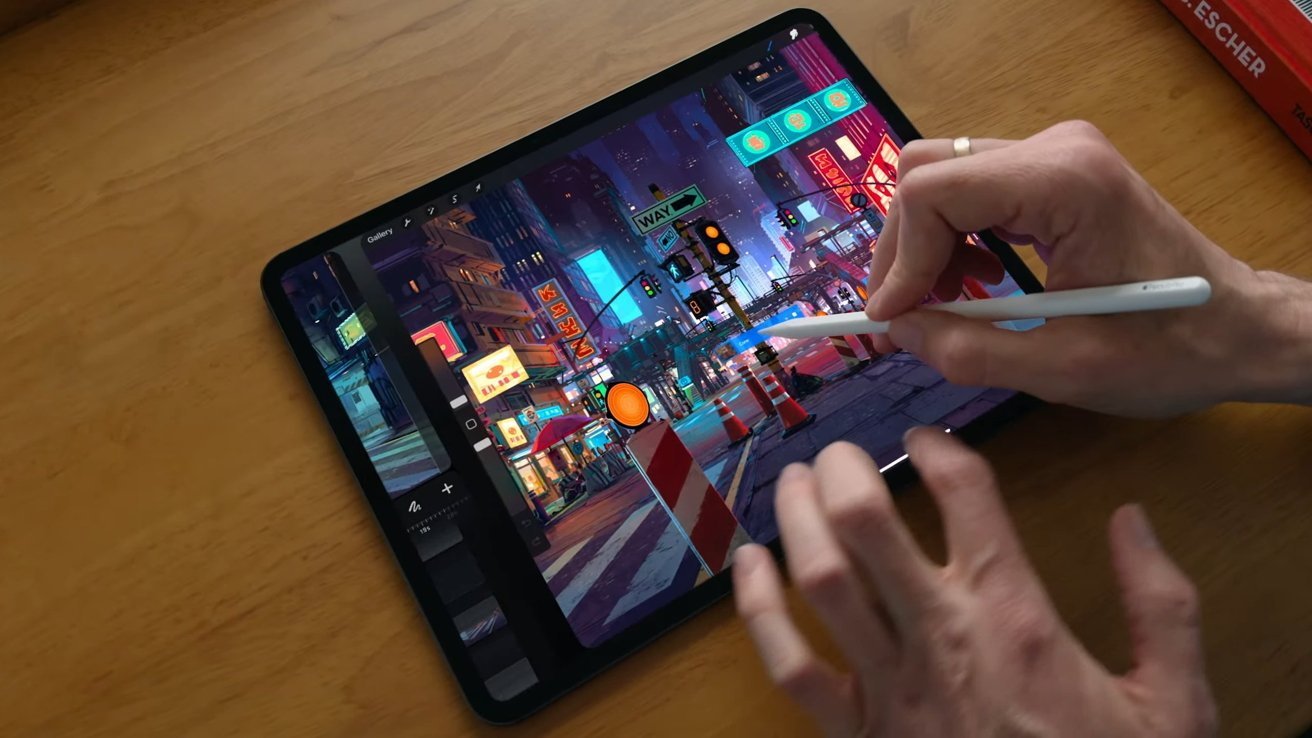iPad Pro bezels could shrink more with OLED film changes
Apple's iPad Pro could get even thinner bezels in the future, thanks to a possible change to the way its OLED panels are manufactured.

The OLED iPad Pro display is vivid and bright.
Apple has continuously pushed to create as thin a bezel as possible for its products. These efforts have resulted in very thin bezels for the iPhone and MacBook Pro, but a change could result in even thinner versions for the iPad lineup.
According to The Elec on Tuesday, Apple is preparing to approve or reject a display driver IC (DDI) from LX Semicon. The change could allow LG Innotek to supply its own chip-on-film (CoF) materials for use in iPad OLED panels.
The DDI uses thin film transistors (TFTs) to operate the display, attached to the panel using a CoF that is fixed in place via heat compression. The film then sends signals from the DDI to the panel itself.
At present, Apple uses just the DDI supplied by Samsung System LSI in its OLED iPad models. If the approval goes through for the LX Semicon DDI, then this will enable LG Display to use it for its own OLED panels made for the iPad supply chain.
There is no guarantee that this will occur, though. A bid by LX Semicon for Apple to approve the DDI was previously rejected in 2024.
More DDI, more competition
For Apple, approving a new DDI provides quite a few benefits. For a start, it grants LG a bit more freedom in how it produces its OLED iPad panels, as well as more revenue.
That freedom also means that LG can work to improve its future display panel offerings, without being bound to any limitations from the Samsung-supplied DDI. With LG and Samsung having their own differentiated processes, this can help increase competition, resulting in more display innovation.
For LG's panels, the combination of using its own CoF technology and DDI means it has more control over the integration of the panel's layers, especially around the edges of the display. This finer level of control can result in LG making thinner bezels for the iPad displays in the future.
Any decision made by Apple on the LX Semicon DDI will not impact any iPad models arriving in 2025, and probably won't affect any shipping in early 2026 either. What it would do is help improve models beyond one generation away.
Edge-to-edge impossibility
The prospect of thinner bezels may be appealing, but there is a limit to how far Apple and its suppliers can take the concept. The real problem is less manufacturing-related, more about usability.
The purpose of a bezel used to be to deal with the edges of the display when the screen itself couldn't spread that far across the front of the device, due to technological limitations. As those limits were altered and allowing for a close to edge-to-edge screen to be produced, the bezel became more of a grip-related feature.
The iPhone has an edge-to-edge display with a minimal bezel, because a person holds an iPhone by gripping the sides and base, wrapping their one hand around the back. A typical user can hold an iPhone very securely, without needing to touch the front of the display at all.
A larger held-in-hand screen, like an iPad, needs bezels because of how you grip it. Since the fingertips and edges of a thumb often grip around the edges, there needs to be a bezel so that there's an unused space that can be touched without interacting with the display.
The existing bezels could be made a little bit smaller by Apple, but at some point, it will affect how people grip their iPads.
Read on AppleInsider

Comments